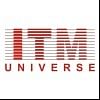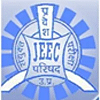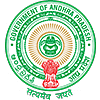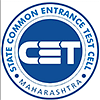Table of Contents
Some of the topics from subjects Physics, Mathematics, Chemistry and biology which the student should prepare for B.S. Abdur Rahman University Engineering Entrance Exam (BSAUEEE) are given below.
BSAUEEE 2023 Mathematics Syllabus
| Units | Topics |
| Applications of Matrices and Determinants | Adjoin, InverseProperties, Computation of inverses, a solution of a system of linear equations by matrix inversion method. Rank of a Matrix Elementary transformation on a matrix, consistency of a system of linear equations, Cramer’s rule, Nonhomogeneous equations, homogeneous linear system, rank method. |
| Vector Algebra | Scalar ProductAngle between two vectors, properties of a scalar product, applications of dot products. Vector Product Right-handed and left-handed systems, properties of vector product, applications of the cross product. The product of three vectors Scalar triple product, properties of a scalar triple product, vector triple product, vector product of four vectors, scalar product of four-vectors. Lines Equation of a straight line passing through a given point and parallel to a given vector, passing through two given points (derivations are not required). The angle between two lines. Skew lines Shortest distance between two lines, condition for two lines to intersect, the point of intersection, collinearity of three points. Planes Equation of a plane (derivations are not required), passing through a given point and perpendicular to a vector, given the distance from the origin and unit normal, passing through a given point and parallel to two given vectors, passing through two given points and parallel to a given vector, passing through three given noncollinear points, passing through the line of intersection of two given planes, the distance between a point and a plane, the plane which contains two given lines, angle between two given planes, angle between a line and a plane. Sphere Equation of the sphere (derivations are not required) whose centre and radius are given, an equation of a sphere when the extremities of the diameter are given. |
| Complex Numbers | Complex number system, Conjugate properties, ordered pair representation. Modulus properties, geometrical representation, meaning, polar form, principal value, conjugate, sum, difference, product, quotient, vector interpretation, solutions of polynomial equations, De Moivre’s theorem and its applications. Roots of a complex number nth roots, cube roots, fourth roots of the standard equation, some practical problems. Ellipse Standard equation of the ellipse (derivation and tracing the ellipse are not required), x2/a2 + y2/b2 = 1, (a > b), Other standard form of the ellipse, general forms, some practical problems, Hyperbola standard equation (derivation and tracing the hyperbola are not required), x2/a2 y2/ b2 = 1, Other form of the hyperbola, parametric form of comics, chords. Tangents and Normals Cartesian form and Parametric form, the equation of chord of contact of tangents from a point (x1, y1), Asymptotes, Rectangular hyperbola standard equation of a rectangular hyperbola. |
| Analytical Geometry | Definition of a Conic General equation of a conic, classification with respect to the general equation of a conic, classification of conics with respect to eccentricity. Parabola Standard equation of a parabola (derivation and tracing the parabola are not required), other standard parabolas, the process of shifting the origin, general form. |
| Differential Calculus | Applications I Derivative as a rate measure - rate of change - velocity - acceleration - related rates - Derivative as a measure of slope - tangent, normal and angle between curves. Maxima and Minima. Mean value theorem - Rolle’s Theorem - Lagrange Mean Value Theorem - Taylor’s and Maclaurin’s series, l’ Hôpital’s Rule, stationary points - increasing, decreasing, maxima, minima, concavity convexity, points of inflexion. |
| Differential Calculus | Applications II Errors and approximations- absolute, relative, percentageerrors, curve tracing, partial derivatives-Euler’s theorem. |
| Integral Calculus & its Applications | Properties of definite integrals, reduction formulae for sin nx and cos nx (only results), Area, length, volume and surface area. |
| Differential Equations | Formation of differential equations, order and degree, solving differential equations (1st order) - variable separable homogeneous, linear equations. Second-order linear equations with constant coefficients f(x) = emx, sin mx, cos mx, x, x2. |
| Discrete mathematics | Mathematical Logic - Logical statements, connectives, truth tables, Tautologies. |
| Groups | Binary Operations - Semi groups - monoids, groups (Problems and simple properties only), order of a group, order of an element. |
| Probability Distributions | Random Variable, Probability density function, distribution function, mathematical expectation, variance, Discrete Distributions - Binomial, Poisson, Continuous Distribution - Normal distribution. |
BSAUEEE 2023 Physics Syllabus
| Units | Topics |
| Electrostatics | Frictional electricity, charges, and their conservation; Coulomb’s law, forces between two point electric charges. Forces between multiple electric charges superposition principle. Electric field due to a point charge, electric field lines; Electric dipole, electric field intensity due to a dipole behaviour of the dipole in a uniform electric field, application of electric dipole in a microwave oven. Electric potential, potential difference electric potential due to a point charge and due to a dipole. The equipotential surfaces Electrical potential energy of a system of two point charges. Electric flux Gauss’s theorem and its applications to find field due to (1) infinitely long straight wire (2) uniformly charged infinite plane sheet (3) two parallel sheets (4) uniformly charged thin spherical shell (inside and outside) Electrostatic induction capacitor and capacitance Dielectric and electric polarisation parallel plate capacitor with and without dielectric medium applications of capacitor energy stored in a capacitor. Capacitors in series and in the parallel action of points Lightning arrester Van de Graaff generator. |
| Electromagnetic Induction and Alternating Current | Electromagnetic induction Faraday’s law induced emf and current Lenz’s law. Self-induction Mutual induction Self-inductance of a long solenoid mutual inductance of two long solenoids. Methods of inducing emf (1) by changing magnetic induction (2) by changing area enclosed by the coil (3) by changing the orientation of the coil (quantitative treatment) analytical treatment can also be included. AC generator commercial generator. (Single phase, three-phase). Eddy current Applications Transformer Long distance transmission. Alternating current measurement of AC AC circuit with resistance AC circuit with inductor AC circuit with capacitor LCR series circuit Resonance and Q factor: power in AC circuits. |
| Electromagnetic Waves and Wave Optics | Electromagnetic waves and their characteristics Electromagnetic spectrum, Radio, Microwaves, Infrared, visible, ultraviolet X-rays, gamma rays. Emission and Absorption spectrum Line, Band and continuous spectra Fluorescence and phosphorescence. Theories of light Corpuscular Wave Electromagnetic and Quantum theories. Scattering of light Rayleigh’s scattering Tyndal scattering Raman effect Raman spectrum Blue colour of the sky and reddish appearance of the sun at sunrise and sunset. Wavefront and Huygen’s principle Reflection, Total internal reflection and refraction of plane wave at a plane surface using wavefronts. Interference Young’s double-slit experiment and expression for the fringe width coherent source interference of light. Formation of colours in thin films analytical treatment Newton’s rings. Diffraction differences between interference and diffraction of the light diffraction grating. The polarization of light waves polarization by reflection Brewster’s low double refraction Nicol prism uses of plane-polarized light and Polaroids rotatory polarization polarimeter. |
| Current Electricity | Electric current – flow of charges in a metallic conductor – Drift velocity and mobility and their relation to electric current. Ohm’s law, electrical resistance. V-I characteristics – Electrical resistivity and conductivity. Classification of materials in terms of conductivity – Superconductivity (elementary ideas) – resistors – colour code for carbon resistors – Combination of resistors – series and parallel – Temperature dependence of resistance – Internal resistance of a cell – Potential difference and emf of a cell. Kirchoff’s law – illustration by simple circuits –Wheatstone’s Bridge and its application for the temperature coefficient of resistance measurement – Metre bridge – Special case of Wheatstone bridge – Potentiometer – principle – comparing the emf of two cells. Electric power – Chemical effect of current – Electrochemical cells Primary (Voltaic, Lechlanche, Daniel) – Secondary – rechargeable cell – lead-acid accumulator. |
| Effects of Electric Current | Heating effect. Joule’s law – Experimental verification. Thermoelectric effects – Seebeck effect – Peltier effect Thomson effect – Thermocouple, Thermo emf, neutral and inversion temperature. Thermopile. Magnetic effect of electric current – Concept of magnetic field, Oersted’s experiment – Biot-Savart law – Magnetic field due to an infinitely long current carrying straight wire and circular coil – Tangent galvanometer – Construction and working – Bar magnet as an equivalent solenoid – magnetic field lines. Ampere’s circuital law and its application. Force on a moving charge in uniform magnetic field and electric field – cyclotron – Force on current-carrying conductor in a uniform magnetic field, forces between two parallel current-carrying conductors – definition of ampere. Torque experienced by a current loop in a uniform magnetic field-moving coil galvanometer – conversion to ammeter and voltmeter – Current loop as a magnetic dipole and its magnetic dipole moment – Magnetic dipole moment of a revolving electron. |
| Atomic Physics | Atomic structure – discovery of the electron – specific charge (Thomson’s method) and charge of the electron(Millikan’s oil drop method) – alpha scattering – Rutherford’s atom model. Bohr’s model – energy quantisation – energy and wave number expression – Hydrogen spectrum – energy level diagrams – sodium and mercury spectra-excitation and ionization potentials. Sommerfeld’s atom model. Xrays–production, properties, detection, absorption, diffraction of X-rays – Laue’s experiment – Bragg’s law, Bragg’s X-ray spectrometer – X-ray spectra – continuous and characteristic X-ray spectrum – Mosley’s law and atomic number. Masers and Lasers – spontaneous and stimulated emission – normal population and population inversion – Ruby laser, He – Ne laser – properties and applications of laser light – holography. |
| Dual Nature of Radiation And matter–relativity | Photoelectric effect – Light waves and photons – Einstein’s photoelectric equation – laws of photoelectric emission – particle nature of energy – photoelectric equation – work function – photocells and their application. Matter waves-wave mechanical concept of the atom – wave nature of particles – De – Broglie relation – De – Broglie wavelength of an electron-electron microscope. The concept of space, mass, time – Frame of references. Special theory of relativity – Relativity of length, time and mass with velocity – (E = mc2). |
| Nuclear Physics | Nuclear properties–nuclear Radii, masses, binding energy, density, charge – isotopes, isobars and isotones – Nuclear mass defect – binding energy. Stability of nucleiBain bridge mass spectrometer. Nature of nuclear forces – Neutron – discovery – properties – artificial transmutation – particle accelerator Radioactivity-alpha, beta and gamma radiations and their properties, -decay, -decay and decay – Radioactive decay law – half-life – means life. Artificial radioactivity – radio isotopes – effects and uses Geiger – Muller counter. Radiocarbon dating – biological radiation hazards.Nuclear fission – chain reaction – atom bomb – nuclear reactor – nuclear fusion – Hydrogen bomb – cosmic rays – elementary particles. |
| Semiconductor Devices and their Applications | Semiconductor theory – energy band in solids – difference between metals, insulators and semiconductors based on band theory – semiconductor doping – Intrinsic and Extrinsic semiconductors. Formation of P-N Junction – Barrier potential and depletion layer. – P-N Junction diode – Forward and reverse bias characteristics – diode as a rectifier – zener diode. Zener diode as a voltage regulator – LED. Junction transistors – characteristics – transistor as a switch – transistor as an amplifier – transistor biasing – RC, LC coupled and direct coupling in amplifier – feedback amplifier – positive and negative feedback – advantages of negative feedback amplifier – oscillator – condition for oscillations – LC circuit – Colpitts oscillator. Logic gates – NOT, OR, AND, EXOR using discrete components – NAND and NOR gates as universal gates – integrated circuits. Laws and theorems of Boolean’s algebra – operational amplifier – parameters – pin-out configuration – Basic applications. Inverting amplifier. Non-inverting amplifier – summing and difference amplifiers. Measuring Instruments – Cathode Ray oscilloscope – Principle – Functional units – uses. Multimeter – construction and uses. |
| Communication Systems | Modes of propagation, ground wave – skywave propagation. Amplitude modulation, merits and demerits – applications – frequency modulation – advantages and applications – phase modulation. Antennas and directivity. Radio transmission and reception – AM and FM – superheterodyne receiver. T.V. transmission and reception– scanning and synchronising. Vidicon (camera tube) and picture tube – block diagram of a monochrome TV transmitter and receiver circuits. Radar – principle – applications. Digital communication – data transmission and reception – principles of fax, modem, satellite communication – wire, cable and Fibre-optical communication. |
BSAUEEE 2023 Chemistry Syllabus
| Units | Topics |
| Inorganic Chemistry | Atomic Structure. Dual properties of electrons, de Broglie relation Heisenberg’s uncertainty principle Wave nature of an electron Schrodinger wave equation (only equation, no derivation) Eigenvalues and Eigenfunction significance only molecular orbital method. Application to Homo diatomic and Hetero diatomic molecules metallic Bond Hybridization of atomic orbitals.Hybridization involving, p and d Orbitals Types of forces between molecules. |
| Periodic Classification | Review of periodic properties Calculation of atomic radii Calculation of ionic radii Method of determination of Ionisation potential Factors affecting ionization potential Method to determine the electron affinity Factors affecting various scales on electronegativity values. |
| P-Block Elements | Group 13 General trends Potash alum Preparation, Properties and uses Group 14 General trends Silicates Types and structure SiliconesStructure and uses Extraction of lead Group 15 General trends PhosphorousAllotropes and extraction Compounds of phosphorous Group 16 General trends H2SO4 Manufacture and properties. Group 17 General characteristics. Physical and Chemical properties Isolation BSAU EEE 16 11 of fluorine and its properties Interhalogen compounds Group 18 Inert gases Isolation, properties and uses. |
| Nuclear Chemistry | Nuclear energy nuclear fission and fusion Radiocarbon dating Nuclear reaction in sun. Uses of radioactive isotopes. |
| Coordination Compounds and Bio-Coordination Compounds An introduction | Terminology in coordination chemistry – IUPAC nomenclature of mononuclear coordination compounds – Isomerism in coordination compounds – Structural isomerism – Geometrical isomerism in 4 – coordinate, 6 – coordinate complexes – Theories on coordination compounds – Werner’s theory (brief) – Valence Bond theory – Crystal field theory – Uses of coordination compounds – Biocoordination compounds. Haemoglobin and chlorophyll. |
| Electrochemistry Conductors, insulators and semiconductors | Theory of electrical conductance – Theory of strong electrolytes – Faraday’s laws of electrolysis – Specific resistance, specific conductance, equivalent and molar conductance – Variation of conductance with dilution – Kohlraush’s law – Ionic product of water, pH and pOH – Buffer solutions – Use of pH values. Cells-Electrodes and electrode potentials-Construction of cell and EMF – Corrosion and its preventions commercial production of chemicals-Fuel cells. |
| Chemical Kinetics-II | First order reaction and pseudo-first-order reaction – Experimental determination of first-order reaction-method of determining order of reaction – temperature dependence of rate constant – Simple and complex reactions. |
| Surface Chemistry | Adsorption-Catalysis-Theory of catalysis-ColloidsPreparation of colloids-Properties of colloids-Emulsions. |
| Solid State –II | Types of packing in crystals-X-Ray crystal structure – Types of ionic crystals – Imperfections in solids – Properties of crystalline solids–Amorphous solid. |
| Thermodynamics – II | I law of thermodynamics – Need for the II law of thermodynamics – Spontaneous and non-spontaneous processes – Entropy – Gibb’s free energy – Free energy change and chemical equilibrium – Third law of thermodynamics. |
| Chemical Equilibrium – II | Applications of law of mass action – Le Chatlier’s principle. |
| Isomerism In Organic Chemistry | Geometrical isomerism – Conformations of cyclic compounds – Optical isomerism – Optical activity – Chirality – Compounds containing chiral centres-D-L and R-S notation – Isomerism in benzene. |
| Hydroxy Derivatives | Nomenclature of alcohols – Classification of alcohols – General methods of preparation of primary alcohols – Properties Methods of distinction between three classes of alcohols 1°, 2° and 3°) – Methods of preparation of dihydric alcohols. (glycol) – Properties – Uses – Methods of preparation of trihydric alcohols – Properties – Uses – Aromatic alcohols – Methods of preparation of benzyl alcohol – Properties – Uses – Phenols – Manufacture of phenols – Properties – Chemical properties – Uses of Phenols. |
| Ethers | Ethers-General methods of preparation of aliphatic ethers – Properties – Uses – Aromatic ethers – Preparation of anisole – Reactions of anisole – Uses. |
| Carboxylic Acids | Nomenclature – Preparation of aliphatic monocarboxylic acids – formic acid – Properties – Uses – Tests for carboxylic acid – Monohydroxy monocarboxylic acids – Lactic acid – Sources – Synthesis of lactic acid – Aliphatic dicarboxylic acids – preparation of dicarboxylic acids – oxalic and succinic acids – Properties – Strengths of carboxylic acids – Aromatic acids – Preparation of benzoic acid – Properties – Uses – Preparation of salicylic acid – Properties – Uses – Derivatives of carboxylic acids – Preparation of acid chloride – acetyl chloride (CH3COCl) – Preparation – Properties – Uses – Preparation of acetamide – Properties – Preparation of acetic anhydride – Properties – Preparation of esters methyl acetate – Properties. |
| Organic Nitrogen Compounds | Aliphatic nitro compounds – Preparation of aliphatic nitroalkanes – Properties – Uses – Aromatic nitro compounds – Preparation – Properties – Uses – Distinction between aliphatic and aromatic nitro compounds – Amines – Aliphatic amines – General methods of preparation – Properties – Distinction between 1°, 2°, and 3° amines – Aromatic amines – Synthesis of benzylamine – Properties – Aniline – preparation – Properties – Uses – Distinction between aliphatic and aromatic amines – Aliphatic nitriles – Preparation – properties – Uses – Diazonium salts – Preparation of benzene diazonium chloride – Properties. |
BSAUEEE 2023 Biology Syllabus
| Units | Topics |
| Taxonomy of Angiosperms | Dual properties of electrons-de-Broglie relation – Heisenberg’s uncertainty principle – Wave nature of an electron – Schrodinger wave equation (only equation, no derivation) – Eigenvalues and Eigenfunction – significance only – molecular orbital method. Application to Homo diatomic and Hetero diatomic molecules-Metallic Bond – Hybridization of atomic orbitals.Hybridization involving, p and d Orbitals – Types of forces between molecules. |
| Plant anatomy | Tissue and tissue systems - anatomy of monocot and dicot roots - anatomy of monocot and dicot stems - anatomy of dicot leaf. |
| Plant physiology Photosynthesis | significance – site of photosynthesis – photochemical and biosynthetic phases – electron transport system – cyclic and non-cyclic photophosphorylation – C3 and C4 pathways – photorespiration – factors affecting photosynthesis – mode of nutrition – autotrophic – heterotrophic – saprophytic – parasitic and insectivorous plants – chemosynthesis – respiration – mechanism of glycolysis – Krebs cycle – pentose phosphate pathway – anaerobic respiration – respiratory quotient – compensation point – fermentation. Plant growth – growth regulators – phytohormones – auxins – gibberellins – cytokinins – ethylene and abscisic acid. Photoperiodism and vernalization. |
| Biology in human welfare | Food production – breeding experiments – improved varieties and role of biofertilizers. Crop diseases and their control – biopesticides – genetically modified food – Bioware – biopiracy – biopatent – sustained agriculture and medicinal plants including microbes. Economic importance – food yielding (rice) – oil yielding (groundnut) – fibre yielding and timber yielding plants. |
| Immunology Innate Immunity | Anatomical Barriers-Physiological Barriers-Phagocytic Barriers-Lymphoidal organs -ThymusBursa of Fabricius-Peripheral Lymphoid Organs-Lymph nodes-Spleen-Antibodies-Immunoglobulins-Regions of polypeptide chain-Transplantation immunologyClassification of grafts- Genetic basis of organ transplant immune system disorder. |
| modern genetics Introduction | Scope-Human Genetics karyotyping Chromosome gene mapping, Recombinant DNA technology and segmenting. Genetic diseases-Human Genome project-Cloning-Transgenic organisms Genetically Modified Organisms (GMO)-GenetherapyBio informatics application-DNA sequencing and protein structure. Biological database. |
| Environmental science | Human population and explosion-Issue-Global warming Crisis Green House Effect-Ozone layer depletion Waste management - Biodiversity conservation (Biosphere reserves) Government and Non Governmental organizations involved energy crisis and Environmental impact-Poverty and environment-Fresh water crisis and management. |
| Theories of evolution | Lamarckism - Neo - Lamarckism - Darwinism - Neo - Darwinism / Modern concept of natural selection-Species concept-Origin of species and Isolating Mechanisms. |

















